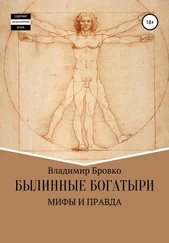57 Bassett & Moss (2004), там же. Цит. на с. 140.
58 Wilke et al. (2004), там же. Цит. на с. 387.
59 Apicella, C. L., Dreber, A., Gray, P. B., Hoffman, M., Little, A. C., & Campbell, B. C. (2011). Androgens and competitiveness in men // Journal of Neuroscience, Psychol ogy, and Economics, 4 (1), 54–62. Цит. на с. 55–56, ссылки убраны. Заметьте, что первые два автора в последующей публикации подробно обсуждают растущее признание значимости женской состязательности. Apicella, C. L., & Dreber, A. (2015). Sex differences in competitiveness: Hunter-gatherer women and girls compete less in gender-neutral and malecentric tasks // Adaptive Human Behavior and Physiology, 1 (3), 247–269.
6 °Cashdan, E. (1998). Are men more competitive than women? // British Journal of Social Psychology, 37 (2), 213–229.
61 Например, Apicella & Dreber (2015), там же; Dreber et al. (2014), там же; Flory, J. A., Leibbrandt, A., & List, J. A. (2015). Do competitive work places deter female workers? A large-scale natural field experiment on gender differences on job-entry decisions // Review of Economic Studies,
82 (1) 122–155. Grosse, N. D., Riener, G., & Dertwinkel-Kalt, M. (2014). Explaining gender differences in competitiveness: Testing a theory on gender-task stereotypes: working paper, University of Mannheim; Gunther, C., Ekinci, N. A., Schwieren, C., & Strobel, M. (2010). Women can’t jump? – An experiment on competitive attitudes and stereotype threat // Journal of Economic Behavior and Organization,
75 (3), 395–401; Wieland, A., & Sarin, R. (2012). Domain specificity of sex differences in competition // Journal of Economic Behavior and Organization, 83 (1), 151–157.
62 См. обсуждение: Khachatryan, K., Dreber, A., von Essen, E., & Ranehill, E. (2015). Gender and preferences at a young age: Evidence from Armenia // Journal of Economic Behavior and Organization, 118, 318–332. См. также: Sutter, M., & Glatzle-Rutzler, D. (2014). Gender differences in the willingness to compete emerge early in life and persist // Management Science, 61 (10), 2339–2354.
63 Cameron, L., Erkal, N., Gangadharan, L., & Meng, X. (2013). Little emperors: Behavioral impacts of China’s onechild policy // Science, 339 (6122), 953–957; Cardenas, J.-C., Dreber, A., von Essen, E., & Ranehill, E. (2012). Gender differences in competitiveness and risk taking: Comparing children in Colombia and Sweden // Journal of Economic Behavior and Organization, 83 (1), 11–23. Khachatryan et al. (2015), там же; Zhang, Y. (2015). Culture, institutions, and the gender gap in competitive inclination: Evidence from the Communist experiment in China. [Электронный ресурс] SS RN: http://ssrn.com/abstract=2268874 or http://dx.doi.org/10.2139/ssrn.2268874.
64 Gneezy, U., Leonard, K. L., & List, J. A. (2009). Gender differences in competition: Evidence from a matrilineal and a patriarchal society // Econometrica, 77 (5), 1637–1664.
65 Andersen, S., Ertac, S., Gneezy, U., List, J. A., & Maximiano, S. (2013). Gender, competitiveness, and socialization at a young age: Evidence from a matrilineal and a patriarchal society // Review of Economics and Statistics, 95 (4), 1438–1443.
66 Sutter & Glatzle-Rutzler (2014), там же.
67 Kay, J. (December 10, 2013). Is it better to play it safe or to place bets that risk bankruptcy? // Financial Times. [Электронный ресурс] http://www.ft.com/intl/cms/s/0/292e514e-60ff-11e3-b7f1-00144feabdc0.html#axzz3wbxCXczm (дата обращения 08.01.2016). Кэй пишет: “Как и все попытки объяснить человеческое поведение, копаясь в нашем эволюционном прошлом, эту историю стоит воспринимать с большой долей скептицизма. Но в моем рассказе не обязательно должна присутствовать историческая достоверность, чтобы оправдать ее важнейший постулат. Люди, совершающие глупые риски, которые сходят им с рук, склонны казаться привлекательными партнерами и лидерами”. Учитывая предшествующую эволюционную историю, похоже, что под “людьми” он понимает “мужчин”.
68 Butt, C. (September 10, 2015). Female surgeons feel obliged to give sexual favours, report finds // Sydney Morning Herald. [Электронный ресурс] http://www.smh.com.au/national/bullying-endemic-among-surgeons-but-victims-too-scared-tospeak-up-report-finds-20150909-gjiuxl.html (дата обращения 10.09.2015).
69 Silvester, M., & Perkins, M. (December 9, 2015). Shame files: Policewomen targeted for sex from the day they join the force // The Age. [Электронный ресурс] http://www.theage.com.au/victoria/a-new-report-says-policewomen-are-targetedfor-sex-from-the-day-they-join-20151208-glidtv.html (дата обращения 30.12.2015).
Глава 6. Гормональная сущность Тестостерона Рекса?
1 Adkins-Regan, E. (2005). Hormones and animal social behavior. Princeton, NJ: Princeton University Press. Цит. на с. 21.
2 Browne, K. R. (2012). Mind which gap? The selective concern over statistical sex disparities // Florida International University Law Review, 8, 271–286. Цит. на с. 284–285, ссылки убраны.
3 Напр., Hoffman, M., & Yoeli, E. (Winter, 2013). The risks of avoiding a debate on gender differences // Rady Business Journal; Cronqvist, H., Previtero, A., Siegel, S., & White, R. E. (2016). The fetal origins hypothesis in finance: Prenatal environment, the gender gap, and investor behavior // Review of Financial Studies, 29 (3), 739–786.
4 Herbert, J. (2015). Testosterone: Sex, power, and the will to win. Oxford, UK: Oxford University Press. Цит. на с. 22.
5 Herbert, J. (May 14, 2015). Sex, cars, and the power of testosterone // OUP Blog. [Электронный ресурс] http://blog.oup.com/2015/05/sex-cars-testosterone/ (дата обращения 16.07.2015).
6 Francis, R. C. (2004). Why men won’t ask for directions: The seductions of sociobiology. Princeton, NJ: Princeton University Press. Цит. на с. 147. Первое упоминание “Тестостерона Рекса” на с. 143.
7 В работах о людях ведущий взгляд – это биосоциальная модель Mazur (1985) и Mazur и Booth (1998). Она предлагает взаимные влияния тестостерона и действий, направленных на улучшение своего статуса, как у мужчин, так и у женщин. Так, более высокий уровень тестостерона способствует честолюбивому поведению, а успех, в свою очередь, еще больше повышает уровень тестостерона (а неудача – понижает). Mazur, A. (1985). A biosocial model of status in faceto– face primate groups // Social Forces, 64 (2), 377–402; Mazur, A., & Booth, A. (1998). Testosterone and dominance in men // Behavioral and Brain Sciences, 21, 353–397. Другой важный теоретический подход – это гипотеза вызова, согласно которой изменения в уровне тестостерона облегчают компромисс между конкуренцией (“вызовом”) и родительством. Wingfield, J. C., Hegner, R. E., Dufty, A. M., Jr., & Ball, G. F. (1990). The “challenge hypothesis”: Theoretical implications for patterns of testosterone secretion, mating systems, and breeding strategies // American Naturalist, 136 (6), 829–846.
Читать дальше
Конец ознакомительного отрывка
Купить книгу












